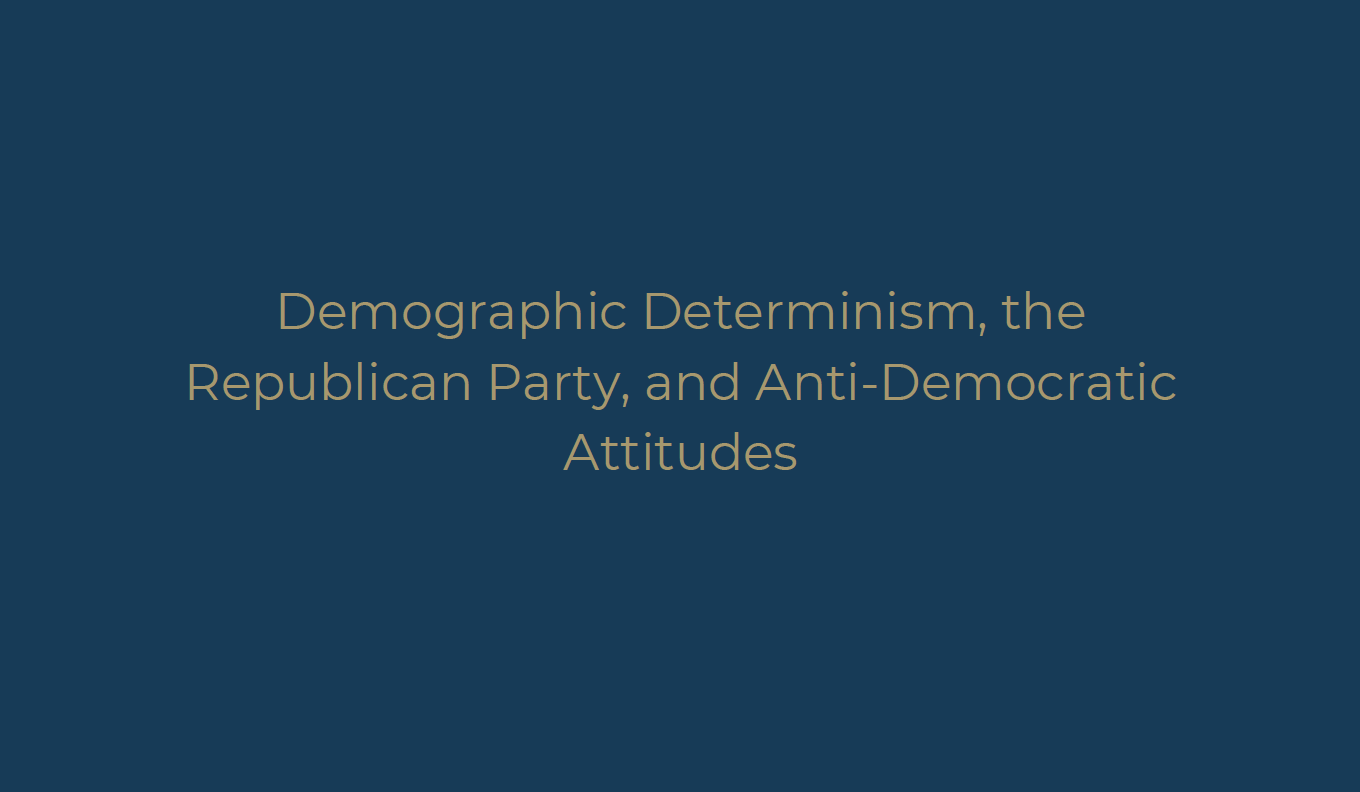Following the 2010 Census, demographers and other experts of Census data began calling a definitive coming shift in U.S. racial demographics (Bowler and Segura 2011). This was the idea that by midcentury, Whites would become a minority and the people of color would become the numerical majority of the country. It has since been described as the majority-minority flip, or the browning of America (Sundstrom 2008).
Due to the politicization of race in America, the majority-minority flip also led experts to make inferences about the future of politics. The narrative that emerged in this period has had staying power in American political discourse and has shaped how Republicans and Democrats interpret the ongoing demographic changes. I call the narrative demographic determinism. It is view of racial demographic change that anticipates it will overwhelmingly benefit the Democratic Party. It is a simple, yet powerful idea: over time as Americans of color increase in size, the Democratic Party will be at an increasing advantage over the Republican Party because the party platform appeals more to people of color. Racial minorities are increasing in size, so electorally they will beable to exercise their influence more. The determinism also cuts in the opposite direction, in that Whites are perceived to be more Republican, and therefore the GOP will be less able to winelections as the country diversifies.
You can access the full report here.


